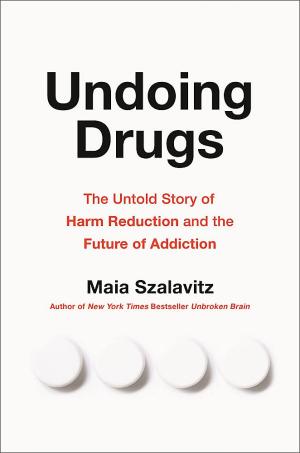Undoing Drugs: The Untold Story of Harm Reduction and the Future of Addiction by Maia Szalavitz (2021, Hatchette Books, 372 pp., $30 HB)

They also have informational pamphlets about the dangers of various substances and how to reduce those dangers. The young women are part of Rogue Valley Harm Reduction, a group devoted to reducing those dangers, and if you would like a clue about how we got to young women in rural Oregon handing out needles and overdose prevention drugs to local drug users, there is no better place to start than Maia Szalavitz's Undoing Drugs.
Szalavitz has been doing excellent journalism around drug policy and addiction issues for years now, and her acumen, expertise, and passion are all on display in Undoing Drugs, her brand new book that tells the story of the rise of harm reduction and uses that narrative to unpack (to "undo") all kinds of harmful paradigms in the realm of drugs and drug policy.
Harm reduction is not a difficult idea. As Szalavitz writes, "The concept itself is surprisingly simple. Harm reduction applies the core of the Hippocratic oath -- first, do no harm -- to addiction treatment and drug policy."
But the concept is even broader than that. We can see harm reduction principles applied in everything from wearing motorcycle helmets or seatbelts to providing condoms for high school students. Or wearing masks and social distancing during a pandemic. Or even more broadly yet, in not criminalizing people over the substances they choose to use.
While Szalavitz neatly documents that the benefits of harm reduction measures such as needle exchanges, opioid maintenance programs, and pill checking programs are amply proven -- such practices save lives, reduce crime and disorder, and allow drug users to achieve less chaotic lives -- she also wisely notes how harm reduction subverts the paradigm of "fighting drugs" and prohibiting them.
Harm reduction flips the morality of drugs on its head. Instead of measuring reductions in drug use as the highest value, harm reduction demands reductions in human misery -- and recognizes quite clearly the human misery generated by drug prohibition: "Once the negative consequences of policy actions count in evaluating their usefulness -- and success isn't just tallied by the amount of drugs seized or the number of people arrested -- it is quite hard to avoid concluding that the damage done by prohibition outweighs any benefit the war on (some) drugs could conceivably have," Szalavitz writes.
Undoing Drugs proceeds both chronologically and thematically, with Szalavitz digging into harm reduction's origins in British heroin prescribing and pioneering Dutch efforts on needle exchanges, propelled by the user activists of the Junkiebund, as well as its American roots in the HIV crisis of the 1980s, when it wasn't only gay men but also injection drug users who were dying of the disease.
Szalavitz, an injection drug user herself at the time, was terrified of getting AIDS from needle sharing and infuriated when she learned that there were simple steps she could have taken to reduce her risk -- but that no one was telling drug users about them. That experience led her on the personal and professional journey that resulted in this book.
As she proceeds, Szalavitz introduces us to a larger than life cast of characters -- drug users, former drug users, public health geeks, academics, major donors, social and racial justice workers -- who propelled harm reduction from the back alleyways to increasingly accepted public policy. A lot of these names will be familiar to longtime readers of the Chronicle: Pioneering harm reductionist Dave Purchase of the North American Syringe Exchange Network, overdose prevention pioneer Dan Bigg at the Chicago Recovery Alliance, and Canadian drug user organizer and Vancouver Area Network of Drug Users (VANDU) cofounder Ann Livingston, all get their stories told, along with dozens of others.
Szalavitz has done us all a great service with Undoing Drugs. She applies the lessons of harm reduction to the fields of public health, psychology, addiction treatment, and racial justice, subverting the narrative of drug prohibition on every page, and opening our eyes to the revolutionary potential of harm reduction. But what is really striking and inspiring is the clear message that individual agency can make a real difference, whether it's a single medical practitioner, an impassioned social worker or street drug users organizing themselves to make sure that "if policies are about us, they're not without us." Harm reductionists are changing the world for the better.
This work by StoptheDrugWar.org is licensed under Creative Commons Attribution-ShareAlike 4.0 International
Add new comment